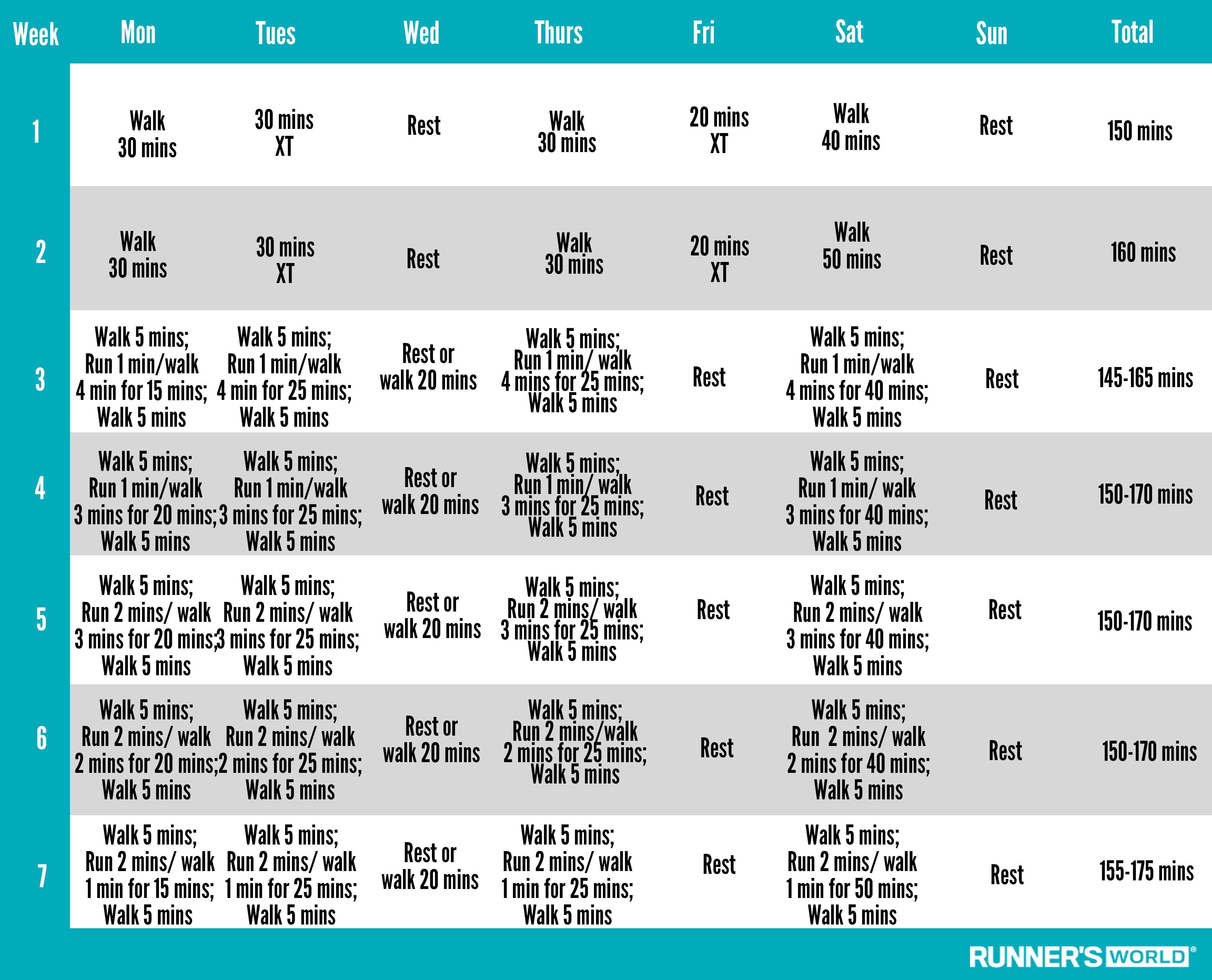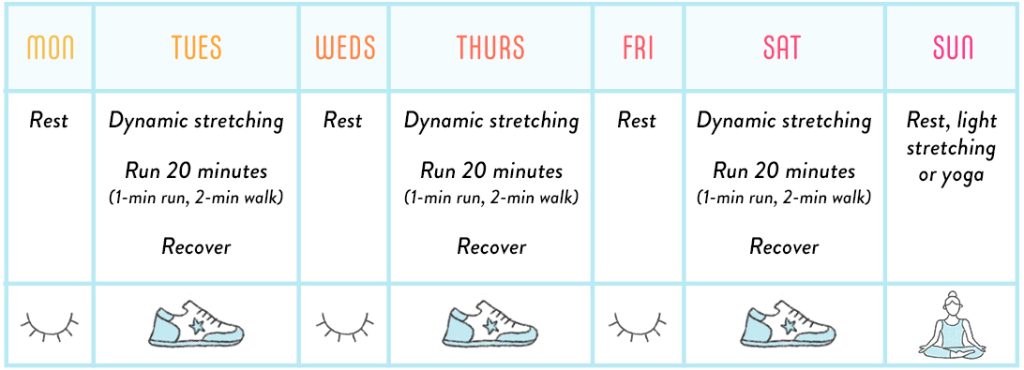Running is a great way to stay fit and healthy. It can be fun, too.
Getting started with running can seem hard at first. But with the right approach, anyone can do it. You don’t need to be an athlete to enjoy running. It’s all about taking small steps and building up over time. Whether you want to run for weight loss, stress relief, or just to feel good, running has many benefits.
This guide will help you start your running journey. We’ll cover simple tips to get you moving. So, put on your sneakers and get ready to hit the road. Let’s make running a part of your life!
Choosing The Right Gear
Choosing the Right Gear is essential for a great running experience. The right gear can prevent injuries and increase your comfort. Let’s look at the basics: shoes and clothing.
Shoes For Beginners
For beginners, finding the right running shoes is crucial. Here are a few tips:
- Visit a specialty running store for advice.
- Consider your foot type and running style.
- Ensure the shoes provide good arch support.
- Look for shoes with proper cushioning.
Comfort and fit are more important than style. Your shoes should feel comfortable right away.
Comfortable Clothing
Wearing the right clothing can make your runs more enjoyable. Here are some guidelines:
| Clothing Item | Tips |
|---|---|
| Shirts | Choose moisture-wicking fabrics to stay dry. |
| Shorts | Look for lightweight and breathable materials. |
| Socks | Invest in running-specific socks to avoid blisters. |
Avoid cotton as it retains moisture and can cause chafing.
Remember, the right gear can make all the difference in your running journey. Choose wisely and enjoy your runs!

Credit: www.runnersworld.com
Setting Realistic Goals
Starting a new running routine can be exciting but overwhelming. Setting realistic goals helps you stay motivated and avoid burnout. Clear, attainable goals provide direction and a sense of achievement.
Starting Small
Begin with short, easy runs. Try running for 10 minutes. Gradually increase your time or distance as you feel more comfortable. This approach prevents injury and builds confidence.
Set specific, measurable goals. For example, “Run 1 mile without stopping” is clear and achievable. Celebrate these small victories to stay motivated.
Tracking Progress
Keep a running journal or use a fitness app. Record your runs, including distance and time. This helps you see improvements over time.
Review your progress regularly. Adjust your goals based on your performance. If you reach a goal easily, set a new challenge. If you struggle, reassess and set a more attainable goal.
Tracking progress keeps you accountable and inspired. It shows how far you’ve come and what you can achieve next.
Creating A Running Schedule
Starting a running routine can be exciting. But, to stay consistent, you need a plan. Creating a running schedule helps you track progress and avoid injuries. A well-structured schedule balances running and rest. Let’s break it down.
Weekly Plan
A weekly plan is essential for new runners. It helps you build endurance. Start with a mix of running and walking. Gradually increase your running time. Here’s a simple weekly plan:
| Day | Activity |
|---|---|
| Monday | Rest or Light Walk |
| Tuesday | Run 1 Mile |
| Wednesday | Rest or Cross-Train |
| Thursday | Run 1.5 Miles |
| Friday | Rest |
| Saturday | Run 2 Miles |
| Sunday | Rest or Light Walk |
Rest And Recovery
Rest and recovery are crucial parts of your schedule. They help your body heal and prevent injuries. Include rest days in your weekly plan.
- Rest days: No running. Light activities like walking are okay.
- Cross-training: Try activities like swimming or cycling. They give your running muscles a break.
- Sleep: Aim for 7-8 hours of sleep each night. It boosts recovery.
Listen to your body. If you feel pain, take a break. Pushing through pain can lead to injuries.

Credit: www.youtube.com
Warming Up And Cooling Down
Getting into running involves more than just hitting the pavement. Proper warming up and cooling down are essential parts of any running routine. These steps help prevent injuries and improve performance. They prepare your muscles for action and aid in recovery after your run.
Effective Warm-up Exercises
Start with a light jog or brisk walk. This gets your blood flowing and muscles ready. Follow this with dynamic stretches. These are moving stretches that warm up your muscles.
- Leg swings: Stand on one leg, swing the other forward and back.
- Arm circles: Extend your arms to the sides and make small circles.
- High knees: Run in place, bringing your knees up to your chest.
- Butt kicks: Run in place, kicking your heels up to touch your butt.
These exercises should take about 5-10 minutes.
Post-run Stretches
After your run, cool down with some static stretches. These stretches help relax your muscles and improve flexibility.
- Hamstring stretch: Sit on the ground, extend one leg, and reach for your toes.
- Quad stretch: Stand on one leg, pull your other foot towards your butt.
- Calf stretch: Stand facing a wall, press your heel into the ground.
- Hip flexor stretch: Kneel on one knee, push your hips forward.
Hold each stretch for 20-30 seconds.
Remember, warming up and cooling down are crucial. They help you run better and stay injury-free.
“`Finding The Right Running Pace
Starting a running routine can be both exciting and daunting. One key aspect to keep in mind is finding the right running pace. Running too fast can lead to fatigue and injuries. Running too slow might not provide the desired fitness benefits. Balancing your pace is crucial for both enjoyment and progress.
Listening To Your Body
Your body gives signals about how it’s feeling during a run. Pay attention to these signals. If you feel pain or extreme fatigue, slow down. If you feel comfortable and energetic, you may gradually increase your pace. Here are some tips to help you listen to your body:
- Breathe Steadily: Ensure your breathing is steady and not labored.
- Check Your Heart Rate: A moderate pace keeps your heart rate within a safe range.
- Feel Your Muscles: Soreness is normal, but sharp pain is not.
Using A Running App
Using a running app can help you track your pace and progress. These apps provide valuable data about your runs, helping you find the right pace. Here are some benefits of using a running app:
- Track Distance and Time: Measure how far and how long you run.
- Monitor Your Pace: Keep an eye on your average pace per mile or kilometer.
- Set Goals: Set realistic goals and achieve them with the app’s help.
- Analyze Progress: Review your performance over time to see improvements.
Some popular running apps include:
| App Name | Features |
|---|---|
| Strava | Social sharing, GPS tracking, performance analysis |
| Runkeeper | Goal setting, audio cues, detailed statistics |
| Nike Run Club | Personalized coaching, challenges, community support |
Choose an app that suits your needs and start tracking your runs today. It will help you find the right pace and stay motivated.

Credit: www.reddit.com
Staying Motivated
Staying motivated is crucial for anyone new to running. Keeping your enthusiasm high can be the difference between sticking with your new habit or giving up. Here are some tips to help you stay motivated on your running journey.
Setting Milestones
Setting milestones can keep you focused and driven. Break your big goals into smaller, achievable steps. These small wins will give you a sense of progress.
- Weekly Goals: Aim to run a certain distance or time each week.
- Monthly Targets: Plan to increase your distance or speed each month.
- Long-term Milestones: Set a goal to participate in a 5K or 10K race.
Track your progress in a journal or app. This helps you see how far you’ve come. Celebrate each milestone. Reward yourself with a new pair of running shoes or a fun outing.
Joining A Running Group
Joining a running group can be a great way to stay motivated. Running with others makes the experience more enjoyable. You get to share your journey with like-minded people.
| Benefits | Details |
|---|---|
| Accountability | Others expect you to show up, which keeps you committed. |
| Support | Receive encouragement and advice from experienced runners. |
| Social Interaction | Make new friends and enjoy socializing while running. |
Find a local running group online or through community centers. Many cities have groups for beginners. Don’t be afraid to join even if you’re new to running.
Nutrition And Hydration
Proper nutrition and hydration are key for successful running. They help boost performance and ensure a healthy body. Eating the right foods and staying hydrated can make a big difference in how you feel and perform during your runs.
Pre-run Snacks
A good snack before running can give you the energy you need. Choose foods that are easy to digest and rich in carbohydrates. Here are some options:
- Bananas – High in carbs and potassium.
- Oatmeal – Provides slow-releasing energy.
- Toast with peanut butter – Combines carbs and protein.
- Yogurt with fruit – Light and nutritious.
Eat your snack 30-60 minutes before running. This gives your body time to digest and convert food into energy. Avoid heavy or greasy foods. They can cause discomfort while running.
Staying Hydrated
Hydration is crucial for runners. It helps regulate body temperature and keeps joints lubricated. Here are some tips to stay hydrated:
- Drink water throughout the day, not just before your run.
- Aim for at least 8 cups of water a day.
- Consider a sports drink for runs longer than an hour. They replace lost electrolytes.
- Listen to your body. Drink when you feel thirsty.
Carry a water bottle if you’re running long distances. Take small sips every 15-20 minutes. This helps maintain hydration levels without causing stomach discomfort.
In hot weather, increase your water intake. Sweat more means losing more fluids. Staying hydrated helps prevent heat-related issues.
Proper nutrition and hydration can make your running experience enjoyable and safe. So, plan your snacks and drink water regularly. Your body will thank you.
Preventing Injuries
Starting a running routine is exciting, but it’s important to stay safe. Preventing injuries should be a top priority for any beginner. Proper techniques and precautions can help you enjoy running without setbacks.
Common Beginner Injuries
Many beginners face injuries due to improper techniques or overexertion. Here are some common ones:
- Shin Splints: Pain along the shinbone caused by overuse.
- Runner’s Knee: Pain around the kneecap from repetitive stress.
- Achilles Tendonitis: Inflammation of the Achilles tendon.
- Plantar Fasciitis: Heel pain due to inflammation of the plantar fascia.
Tips For Injury Prevention
Preventing injuries requires a mix of proper techniques and consistent care. Follow these tips to stay injury-free:
- Warm-Up and Cool Down: Always start with a warm-up and end with a cool-down.
- Proper Footwear: Invest in good running shoes that provide adequate support.
- Gradual Progression: Increase your mileage and intensity slowly to avoid overuse injuries.
- Strength Training: Incorporate strength exercises to support your muscles and joints.
- Listen to Your Body: Pay attention to pain and rest if you feel discomfort.
- Stretch Regularly: Stretch your muscles after runs to maintain flexibility.
Frequently Asked Questions
How Do Beginners Start Running?
Beginners should start with a mix of running and walking. Gradually increase the running intervals. This helps build endurance. Consistency is key to progress.
How Often Should I Run Each Week?
Aim to run three to four times a week. This frequency allows for recovery. It helps prevent injury and overtraining.
What Should I Wear For Running?
Wear comfortable, moisture-wicking clothing. Proper running shoes are essential. They provide support and prevent injuries.
How Can I Improve My Running Stamina?
Increase your running distance gradually. Incorporate interval training and strength exercises. Proper nutrition and hydration are also crucial.
Conclusion
Starting your running journey can be simple and rewarding. Set small, realistic goals. Gradually increase your distance and pace. Listen to your body to avoid injuries. Consistency is key for progress. Celebrate every milestone, no matter how small. Running not only improves physical health but also boosts mental well-being.
Remember to enjoy the process and stay patient. Soon, running will become a natural part of your routine. Happy running!



